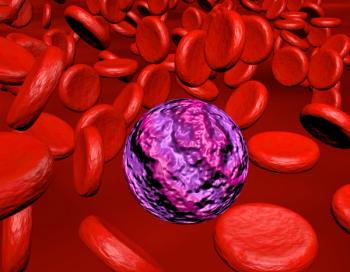
Dan Pollyea, MD, MS, on Venetoclax and IDH Mutations in Patients With AML
The leukemia expert talks about how current findings may hold promise for a larger group of patients in the future.
According to a presentation at the 2020 American Society for Hematology Annual Meeting & Exposition, the combination of venetoclax (Venclexta) and azacitidine (Vidaza) showed impressive efficacy for patients with acute myeloid leukemia with IDH1/IDH2 mutations who were treatment naïve and ineligible for chemotherapy, achieving high response rates, with a longer duration of response and increased median overall survival when compared with treatment with azacitidine alone.
In an interview with CancerNetwork®, Dan Pollyea, MD, MS, of the University of Colorado Cancer Center, talked about the impact of this study and its potential to help patients with IDH wild–type disease down the road.
Transcript:
When it when it comes to venetoclax, I don’t think there were any real preconceived notions that patients with these mutations would respond better or worse [to treatment]. But that was certainly the observation that we began seeing in the very first clinical trials, and that’s been an ongoing observation, all the way up to this latest phase 3 study that was [published] in the New England Journal of Medicine.1 As to why this is the case? That’s a fascinating question. Some of my colleagues have made really great attempts to answer that question, but I think, for the most part, a lot of it still remains to be understood. I think in the coming years, this question will get worked out. And I think that the excitement around that is that it could potentially lead to us allowing for IDH wild-type [disease] to maybe have the same responses, if we can understand why IDH-mutant [disease] responds so well.
Reference
1. DiNardo CD, Jonas BA, Pullarkat V, et al. Azacitidine and Venetoclax in Previously Untreated Acute Myeloid Leukemia. N Engl J Med. 2020;383(7):617-629. doi:10.1056/NEJMoa2012971
Newsletter
Stay up to date on recent advances in the multidisciplinary approach to cancer.


















































































